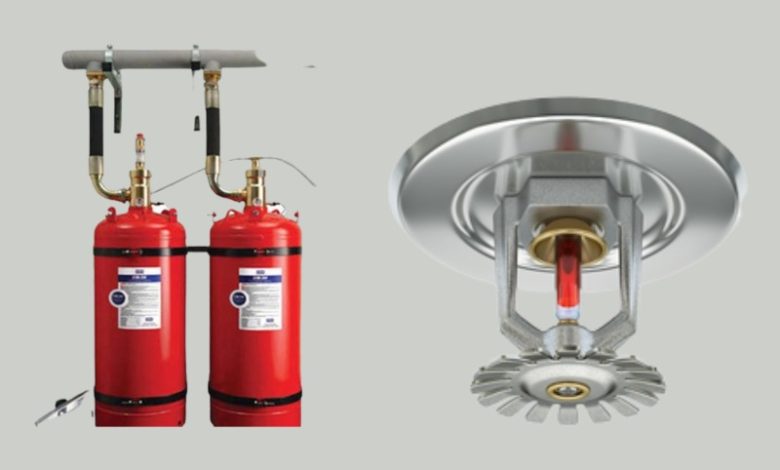
The two systems, fire suppression, and fire sprinkler are comparable but not identical. Here’s what you need to know about both, as well as how to determine whether you need a fire suppression system as part of your overall fire sprinkler system.
What is a fire suppression system?
A fire suppression system, like a fire sprinkler system, is activated by heat, smoke, or a combination of the two to extinguish or control flames. A fire suppression system, on the other hand, employs gaseous, chemical, or foam fire suppression agents rather than water to put out the fire.
Because water may harm some types of properties, such as electronics, spaces such as server rooms or semiconductor production plants would benefit from a fire suppression system rather than a sprinkler system. Because water is ineffective as a fire suppression agent when oil and certain other compounds are combusted. A fire suppression system is also required for facilities that deal with highly flammable substances like oil and gas.
Fire Suppression System Types
As previously stated, there are chemical, gaseous, and foam fire suppression agents, each with its own set of applications. These are some examples:
Carbon Dioxide (CO2) is a gaseous agent that operates swiftly and effectively but poses a health risk to humans. It’s best for facilities that aren’t manned or occupied.
Dry Chemical Suppression – extinguishes flames produced by flammable/combustible liquids fast. Furnace rooms, flammable liquid storage places, and mechanical rooms are also good candidates.
Wet Chemical Suppression — This method employs liquid ingredients to inhibit re-ignition. It’s ideal for kitchens.
Clean Agent Fire Suppression – because it leaves no residue, it is perfect for delicate applications such as museums, archives, libraries, computer or server rooms, and so on.
What exactly is a sprinkler system?
A fire sprinkler system is a collection of sprinklers that spray water on a fire to control and extinguish it. Heat or smoke activates these mechanisms (or both). Water is an effective or the most effective fire suppression agent for many types of fires.
Additionally, sprinklers use water, a relatively affordable commodity that most buildings already have access. They might be less expensive to run than alternative fire suppression systems. Water, on the other hand, can cause damage to some types of property and is useless against certain sorts of flames, such as grease fires. A fire sprinkler system may not be the best option in certain situations.
Fire Sprinkler System Types
Depending on the application, there are various distinct types of sprinkler systems. Deluge sprinklers are one example: the sprinkler heads are always open and the pipes fill with water when they are triggered. Good for storing hazardous materials or other high-risk environments, such as airplane hangars.
Dry pipe sprinklers— When the system is started, the pipes fill with water. Because the pipes remain dry, this technique is ideal for unheated structures like warehouses, where full pipes might rupture in freezing temperatures.
Wet pipe sprinklers—the pipes are always filled. These systems are commonly found in high-traffic, high-occupancy buildings such as hotels, office buildings, and high-rises.
Sprinklers are actuated by a supplementary fire detection system. Used to protect sensitive regions from harm caused by inadvertent activation. This includes places like museums and libraries.
Don’t know what your fire suppression system has or what it requires? Our Company Zedex Fire can assist you. Our expert staff can examine, maintain, and even update your existing fire suppression system to ensure the safety of your building, assets, and personnel in the case of a fire.



